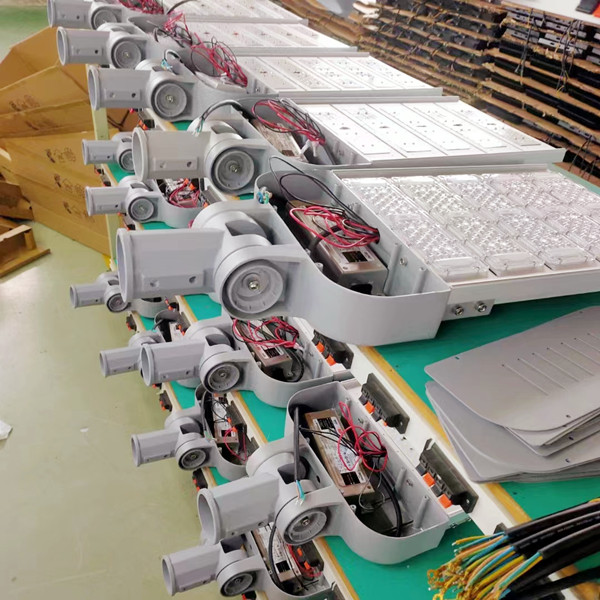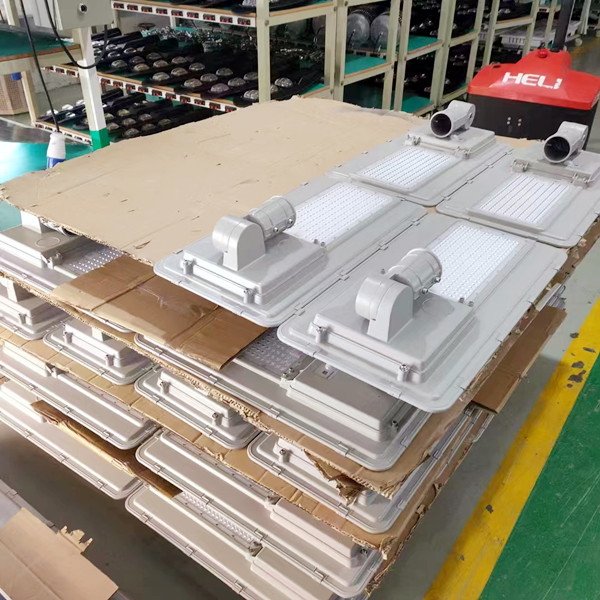LED street light power supplies are the most efficient worldwide, with an efficiency of up to 95% and a high power factor of up to 0.99. They boast high reliability and a long lifespan, meeting IP67 waterproof standards. These power supplies are suitable for high-power lighting fixtures such as streetlights and tunnel lights, and their aluminum housing provides excellent heat dissipation.
The correct choice of LED street light power supplies (types of LED street light power supplies) is crucial for the proper operation of mechanical equipment's electrical control systems.
In the process of selecting LED street light power supplies, there are many factors and key points to consider. So, what aspects do we need to consider in the selection of LED street light power supplies?

The basic requirements for an LED streetlight driver power supply are as follows:
LED streetlight driver power supplies generally have a power rating of not less than 100W, with specific ratings such as 100W, 150W, 200W, 250W, and 300W, among others. Such high power demands that they must meet standards and specifications related to current harmonic limits and input power factor requirements.
Efficiency is a critical indicator of power supply energy efficiency, and the efficiency of LED streetlights is largely determined by the efficiency of the driver power supply. "ENERGY STAR" 2.0 specifications require external power supplies to have an efficiency of 87%. Although "ENERGY STAR" specifications are not mandatory, products that comply with "ENERGY STAR" standards are more competitive. To achieve high efficiency for LED driver power supplies, a switch-mode power supply (SMPS) topology must be used to provide constant current drive to the LEDs.
Currently, LED streetlights need to have a lifespan of over 30,000 hours to compete with high-pressure sodium lamp streetlights. For LED light sources themselves, well-known brands can achieve 30,000 to 50,000 hours of lifespan. However, some LED streetlight driver power supplies have lifespans of only 20,000 hours or even less than 10,000 hours, which can negatively impact the widespread adoption of LED streetlights.
For LED streetlights, the outdoor environment dictates strict requirements for waterproofing and lightning protection, especially regarding protection against induced lightning.
Lightning interference on LED streetlight driver power supplies can be divided into differential mode interference and common mode interference.
When lightning strikes, it emits a broad-spectrum radio wave into the air, which is picked up by overhead power lines. In China's three-phase four-wire power supply network, which is grounded to the neutral line, the instantaneous impedance between the two overhead supply lines differs when they sense the lightning radio wave. This difference generates a transient differential mode lightning pulse interference voltage signal between the two supply lines, which can reach several hundred volts or even over 3000 volts. This interference signal can often cause damage to the rectifier diodes in the driver power supply circuit and the electrical gaps between different polarity electrodes on the PCB. To address this issue, a fast-response varistor should be connected at the AC input of the LED driver power supply to provide an absorption path for the discharge of induced differential mode interference signals caused by lightning. Additionally, an EMI filter connected at the input of the power supply helps to suppress induced signals generated by lightning.
The radio waves produced by lightning striking the two power lines create a common mode interference signal, with voltage levels reaching several hundred to several thousand volts. This interference signal can easily break down the EMC grounding capacitor or the small electrical gaps to the ground (to the enclosure) in the driver circuit, resulting in damage to the driver power supply. Protection against common mode interference signals from lightning can be achieved by connecting a varistor between each power line and the ground. However, the introduction of lightning protection components or circuits should not compromise the basic insulation and protection against electric shock requirements of the entire control device.
Lightning protection measures are only effective against induced interference. They cannot prevent circuit damage if the lightning is directly struck. Relevant standards for control devices specify general requirements for creepage distances, electrical clearances, and dielectric strength (second-level pollution) inside the control device as follows:
① Between the input two conductors, before passing through a fuse and LC circuit, the creepage distance should be maintained at 2.5mm or more, and the electrical clearance should be greater than or equal to 1.7mm, with no dielectric strength requirement.
② For the input circuit and circuits connected to it with respect to ground (enclosure), the creepage distance should be greater than or equal to 2.5mm, the electrical clearance should be greater than or equal to 1.7mm, and they should withstand a dielectric strength test of 2U+1000V (U is the operating voltage).
③ For output circuits with safe extra-low voltage (SELV) or isolated output circuits, the creepage distance and electrical clearance between input and output should be greater than or equal to 6.5mm (this requirement applies not only to the circuit board but also to the pins of the isolation transformer and between pins inside the isolation transformer and components), with a dielectric strength of 3750V. The insulation thickness of the isolation layer between input and output should be greater than or equal to 0.5mm.
④ Between the output circuit and ground, if the output voltage is less than or equal to 50V (rms), the creepage distance should be greater than or equal to 1.2mm, the electrical clearance should be greater than or equal to 0.2mm, and if the output voltage is less than or equal to 42V (rms), the dielectric strength should be 500V. If the output voltage is greater than 50V but less than the previous voltage level, the creepage distance and electrical clearance can be determined using the linear interpolation method, with a dielectric strength of 2U+1000V (here, U is the output voltage).
From the results of testing conducted by the National Quality Supervision and Inspection Center for Lighting Products and the National Light Source Quality Supervision and Inspection Center, the vast majority of control devices for LED streetlights do not fully meet the above requirements. Currently, the lifespan of LED streetlights is constrained by the lifespan of the driver power supply. To facilitate the maintenance of LED streetlights, the design of the streetlight structure should consider the ease of replacement of the power supply in case of failure.

In the realm of LED street lighting, the careful selection of LED driver power supplies is undeniably paramount, as they wield significant influence over efficiency, longevity, and overall safety in these lighting systems. This significance arises from the well-known attributes of LED street light power supplies, which include outstanding efficiency, a high power factor, and robust reliability. They have effectively set the standard for high-power applications such as streetlights and tunnel lights, thanks to their aluminum casings that efficiently dissipate heat, thus ensuring long-lasting performance.
It is worth noting that most control devices for LED streetlights currently available on the market may not fully meet these stringent requirements. Consequently, this could potentially curtail the lifespan of LED streetlights. To guarantee their durability and facilitate maintenance, meticulous consideration should be given to the design and replacement of power supplies within streetlight structures. Neglecting this aspect could lead to significant expenses for LED lighting importers, particularly concerning shipping costs for returned items. A valuable reminder to importers is to avoid the allure of lower costs and always bear in mind that you often get what you pay for.
In this light, LEDER Lighting Manufacturer stands out as a distinguished LED street light manufacturer based in China. Our unwavering commitment to providing high-quality power supplies positions us as a reliable choice for buyers across the globe. If you are in search of top-tier LED street lights, LEDER is the brand you can trust. We warmly welcome your inquiries.
Contact: Mr. Otis
Phone: +8615815758133
Tel: +8615815758133
Email: Hello@lederlighting.com
Add: No. 1 Gaoxin West Road,High-tech Zone, Jiangmen, Guangdong, China